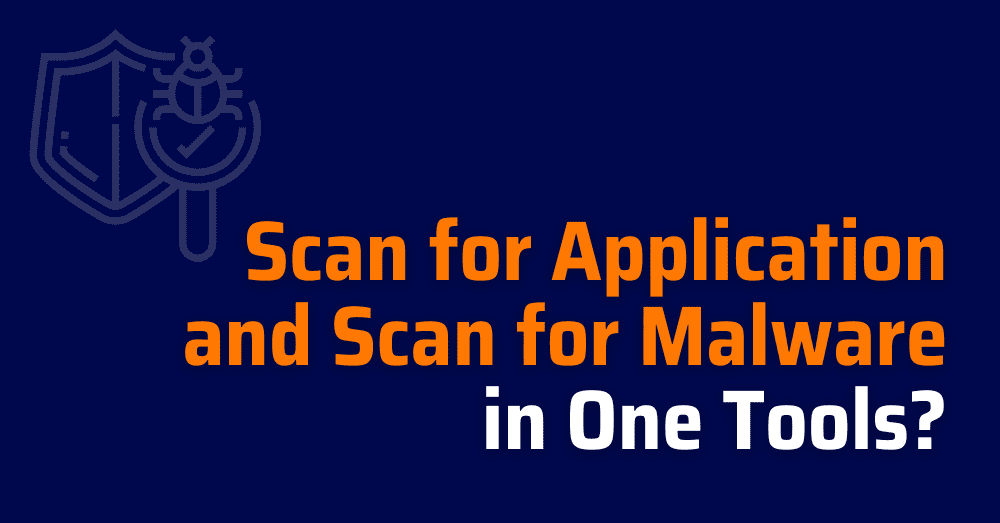Scan for Applications and Malware with the Right Vuln Scanner
When you build and ship software fast, security cannot be an afterthought. You need to scan for application vulnerabilities that attackers could exploit, and at the same time scan for malware hidden in dependencies or pipelines. The problem is, most tools do only one or the other. A modern vuln scanner must unify both: application security testing for code and dependencies, and malware detection across the entire software supply chain. Otherwise, risks slip through into production, leaving backdoors, secrets leaks, or compromised packages in your builds.
This guide explains what an application scan should include, why malware detection is essential, and how to choose a vuln scanner that goes beyond listing CVEs. We’ll also show how Xygeni delivers context-aware prioritization, AutoFix, and developer-friendly CLI scanning so you can secure code without slowing down delivery.
What Should a Scan for Application Include?
Running a scan for application security is more than checking for a few known bugs. A real scan must cover the different layers where attackers try to sneak in:
- Source Code (SAST): Detect common issues like SQL injection, cross-site scripting (XSS), buffer overflows, and unsafe functions before they reach production.
- Open Source Dependencies (SCA): Identify outdated libraries, vulnerable packages, and risky licenses hidden in your dependency tree.
- Secrets Exposure: Prevent API keys, tokens, and credentials from leaking into code, configs, or Git history.
- Infrastructure as Code (IaC): Catch insecure defaults, misconfigured cloud permissions, and unsafe Kubernetes or Terraform files.
- CI/CD Pipelines: Ensure your build and release workflows are not introducing weak points that attackers can abuse.
A complete scan for application vulnerabilities should give you full coverage across these areas, not just a vulnerability list. It needs to show what issues are exploitable, where they live in your code, and how to fix them fast.
With this foundation, you’ll see why only combining application scanning with malware detection can really protect the software supply chain.
Why You Must Scan for Malware
Running a scan for malware is no longer optional in modern pipelines. Attackers don’t just wait for CVEs to be published; they slip malicious code directly into open source packages, containers, or CI/CD workflows. If you don’t scan for malware early, you risk shipping backdoors straight to production.
Consider real-world examples:
- XZ Utils Backdoor (2024): A trusted Linux utility was poisoned at the source with a stealthy backdoor. Standard vulnerability scanners missed it.
- Malicious npm Packages: Attackers frequently publish trojanized packages that steal credentials, open reverse shells, or mine crypto inside CI/CD jobs.
- Obfuscated Code in PyPI: Python libraries have been found hiding info-stealers and spyware behind base64-encoded payloads.
Malware like this is hard to catch with manual reviews. Adversaries use obfuscation and hidden install scripts to avoid detection. That’s why a scan for malware must go beyond signature-based checks, it should analyze code, dependencies, and runtime behaviors across the entire software supply chain.
Unlike endpoint antivirus tools, a DevOps-focused malware scan needs to run in your repos, builds, and registries. Otherwise, malicious components can slip into your pipeline and compromise everything downstream.
Detecting Vulnerabilities with the Right Vuln Scanner
A basic vuln scanner gives you a long list of CVEs. However, most of them are not exploitable in your code, and that noise overwhelms developers. Instead, what you really need is a scanner that highlights only the issues that matter when you scan for application vulnerabilities across your projects.
The right vuln scanner should detect:
- Known vulnerabilities in dependencies, with context on reachability.
- Code-level flaws like injections, auth bypass, or unsafe memory handling.
- Misconfigurations in IaC templates, which could expose critical cloud services.
- Secrets leakage from Git history, configs, or container images.
Nevertheless, detection is only half the job. Without prioritization, teams drown in alerts and delay fixes. Therefore, modern vuln scanners must include:
- Exploitability insights → filter vulnerabilities using reachability and EPSS scores.
- Business context → flag the issues that affect sensitive services first.
- Actionable fixes → provide developers with clear remediation steps, not just reports.
In other words, the right vuln scanner goes beyond CVE hunting. It not only integrates across the SDLC but also reduces noise and helps you remediate fast. As a result, security doesn’t block delivery when you scan for application security risks alongside malware threats.
How Xygeni Does It Differently
Most scanners either check for vulnerabilities or look for malware, but Xygeni is the only platform that unifies both across the entire Software Development Lifecycle (SDLC). Here’s how:
- Prioritization Funnel: Not all findings matter. Xygeni filters results through exploitability analysis (reachability + EPSS scores) and business context. Developers only see the issues that are real risks, not noise.
- Malware Detection Across the SDLC: From code and dependencies to builds and registries, Xygeni scans for malware at every step. Our Early Warning System blocks malicious packages as soon as they’re published, long before a CVE exists.
- AutoFix Remediation: Instead of dumping reports, Xygeni creates secure pull requests with ready-to-apply fixes. That can mean patching a vulnerable dependency, revoking an exposed secret, or replacing unsafe code patterns automatically.
- Developer-Friendly CLI: Security fits naturally into your workflow. Run a malware or SAST scan locally or in CI/CD with a single command:
xygeni malware -n MyProject --upload
xygeni sast -n MyProject --upload
See Xygeni It in Action
With this approach, Xygeni isn’t just another vuln scanner, it’s the only tool that helps you scan for applications and malware together, prioritize the critical risks, and fix them automatically without slowing down delivery.
Start Scanning Smarter Today
Don’t settle for tools that only solve half the problem. With Xygeni, you can scan for application vulnerabilities and scan for malware in one unified workflow. Our vuln scanner gives you context, prioritization, and AutoFix so developers can fix issues fast without breaking delivery.
- Secure your entire software supply chain.
- Block malware before it enters your pipeline.
- Fix vulnerabilities with safe, automated patches.
Start your free trial today, no credit card required. Experience how easy it is to scan, prioritize, and remediate risks with Xygeni.

